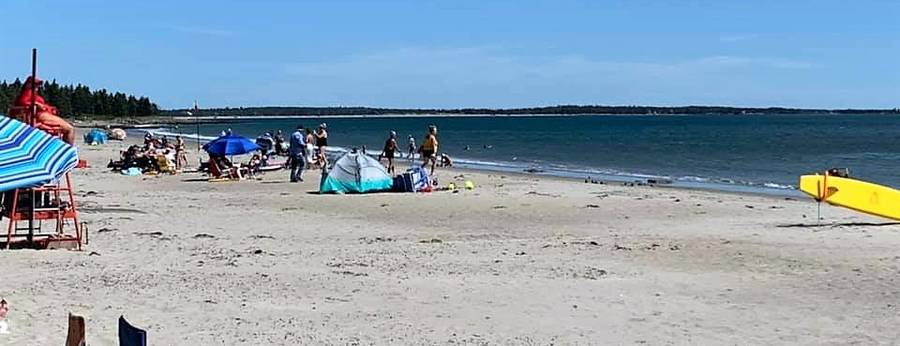
2021-07-07
Nova Scotia lifeguards hit the beaches July 1
by KEVIN MCBAINLocal Journalism Initiative Reporter
Lifeguards with the Nova Scotia Lifeguard Service (NSLS) will once again be patrolling beaches throughout Nova Scotia keeping the water safe for swimmers.
Beginning July 1, and likely through to the end of August, 82 lifeguards will be supervising 25 beaches in 12 counties.
Last summer, more than 300,000 people visited these beaches and more than 100 rescues took place, according to a media release. In Lunenburg County, Bayswater Beach and Rissers Beach will have lifeguards on duty from 10 a.m. to 6 p.m. every day. There are currently no supervised beaches in Queens County.
"We know Nova Scotians and visitors are looking forward to summer fun at the province's beaches," said Lands and Forestry Minister Chuck Porter in the release. "Lifeguards are trained and ready to respond to any situation. Please follow their instructions and make safety a priority when swimming and enjoying other water sports."
The Nova Scotia Lifeguard Service has supervised the province's most popular beaches for 48 years. Since 1973, lifeguards have supervised nearly 20 million people and made nearly 4,850 rescues, according to the news release.
The service is contracted by the Department of Lands and Forestry, several municipalities and Parks Canada to provide supervision at the 25 Nova Scotia beaches. Lifeguards hold a Lifesaving Society National Lifeguard certification, Standard First Aid, Oxygen Administration and Cardiopulmonary Resuscitation/Automated External Defibrillation.
Paul D'Eon, NSLS director, explained in a phone interview how beaches are selected to have lifeguard supervision.
He said requests for supervision normally comes from one of the three levels of government who show an interest in a beach being supervised. NSLS then studies the beach over a summer to see if it is suitable.
Along with this, about every five years NSLS staff is tasked with creating a list of beaches that would be suitable for supervision if the program was to expand.
He recognized there is a gap on the South Shore in Queens County. The last beach to receive supervision in the county is Merrymakedge Beach in Kejimkujik National Park. That was about 10 years ago and it was later decided to stop supervision there.
"We have looked at a few beaches there and I would like to find a suitable spot, but none have risen up to rank," said D'Eon.
A beach must meet a set of four criteria in order to be designated suitable for supervision, according to D'Eon.
The first is that it must have sufficient infrastructure such as parking space, washrooms and change rooms to ensure sustainability.
The second is population.
"We have about 2,000 beaches around our coastline and many are in isolated areas," said D'Eon. "How many people will be using the beach? We have gone to places for a summer and no one shows up."
The third is safety.
"We want to look at places that are reasonably safe for the public to go," D'Eon explained. "Are there cliffs, currents, drop-offs?"
The fourth criteria is whether a particular beach has reasonable access to supervised swimming for families.
Funding for lifeguards typically is covered by one of the three levels of government involved. There are also other alternatives, such as when a municipality decides to go out on its own concerning supervision of a particular beach.
He gave an example of the Halifax Regional Municipality, which offers supervision at about 30 beaches in the area on its own, while the provincial government is looking after four or five others.
In the end, D'Eon, suggested, "the goal of the NSLS is, the more supervised beaches the better."








